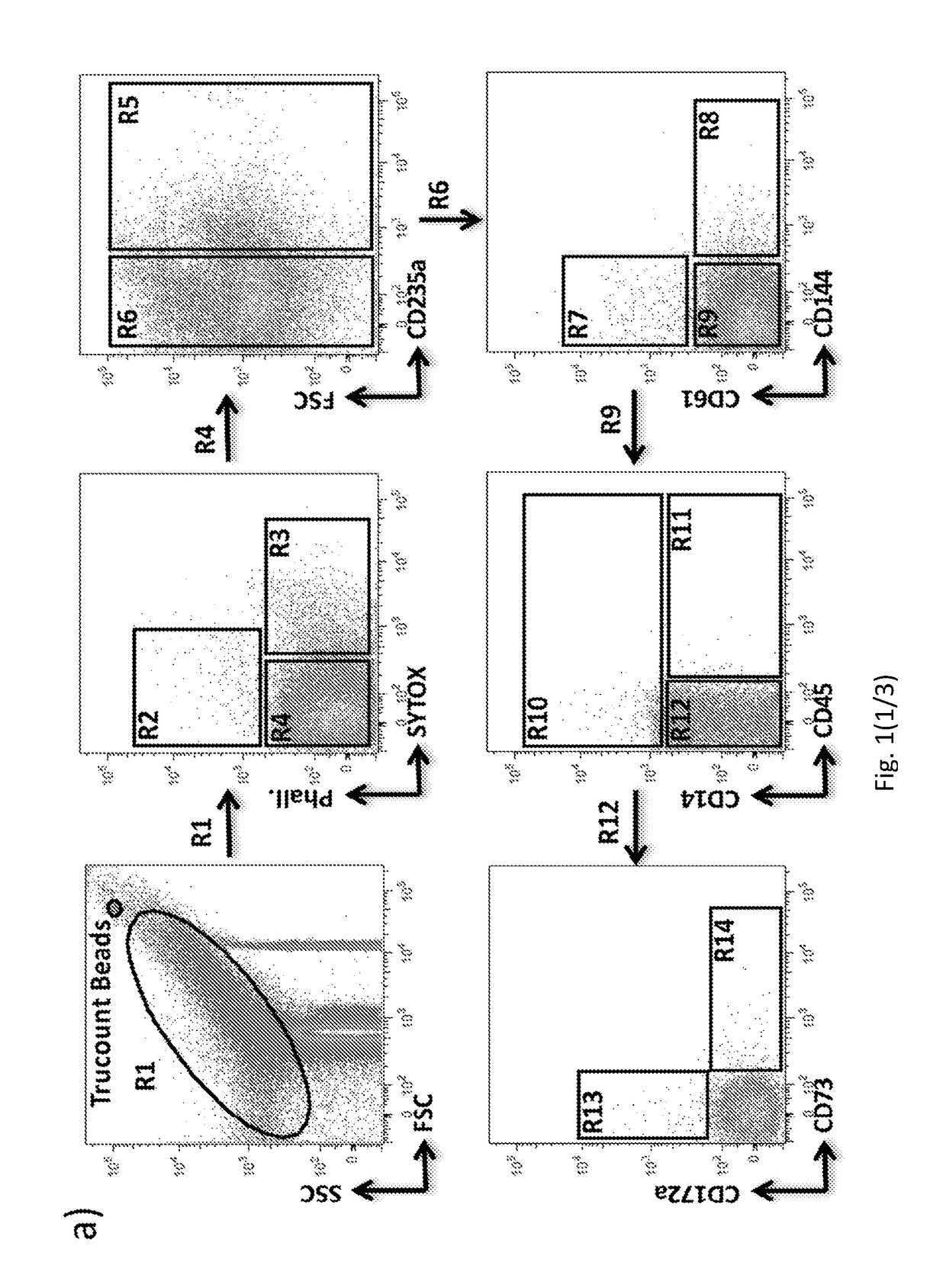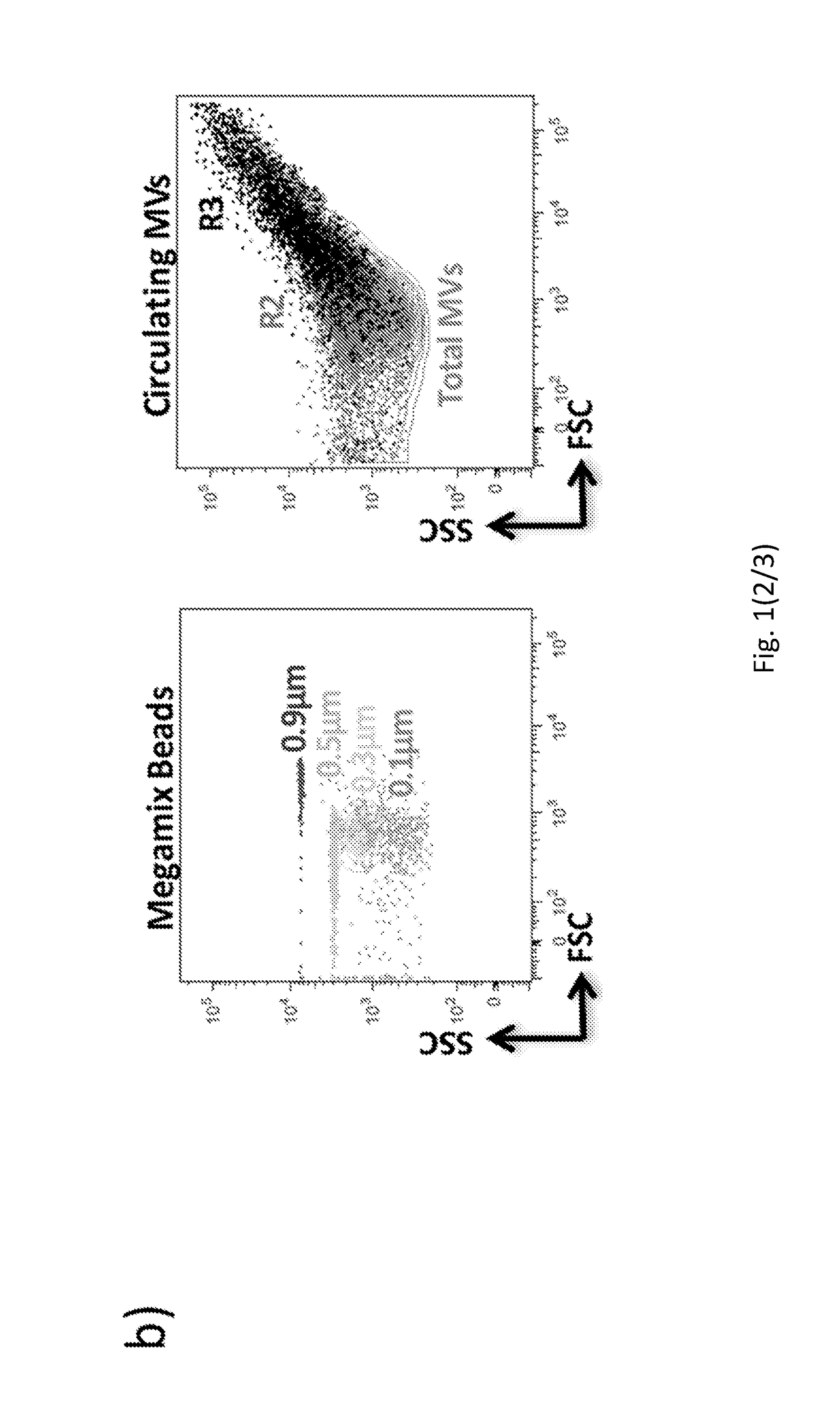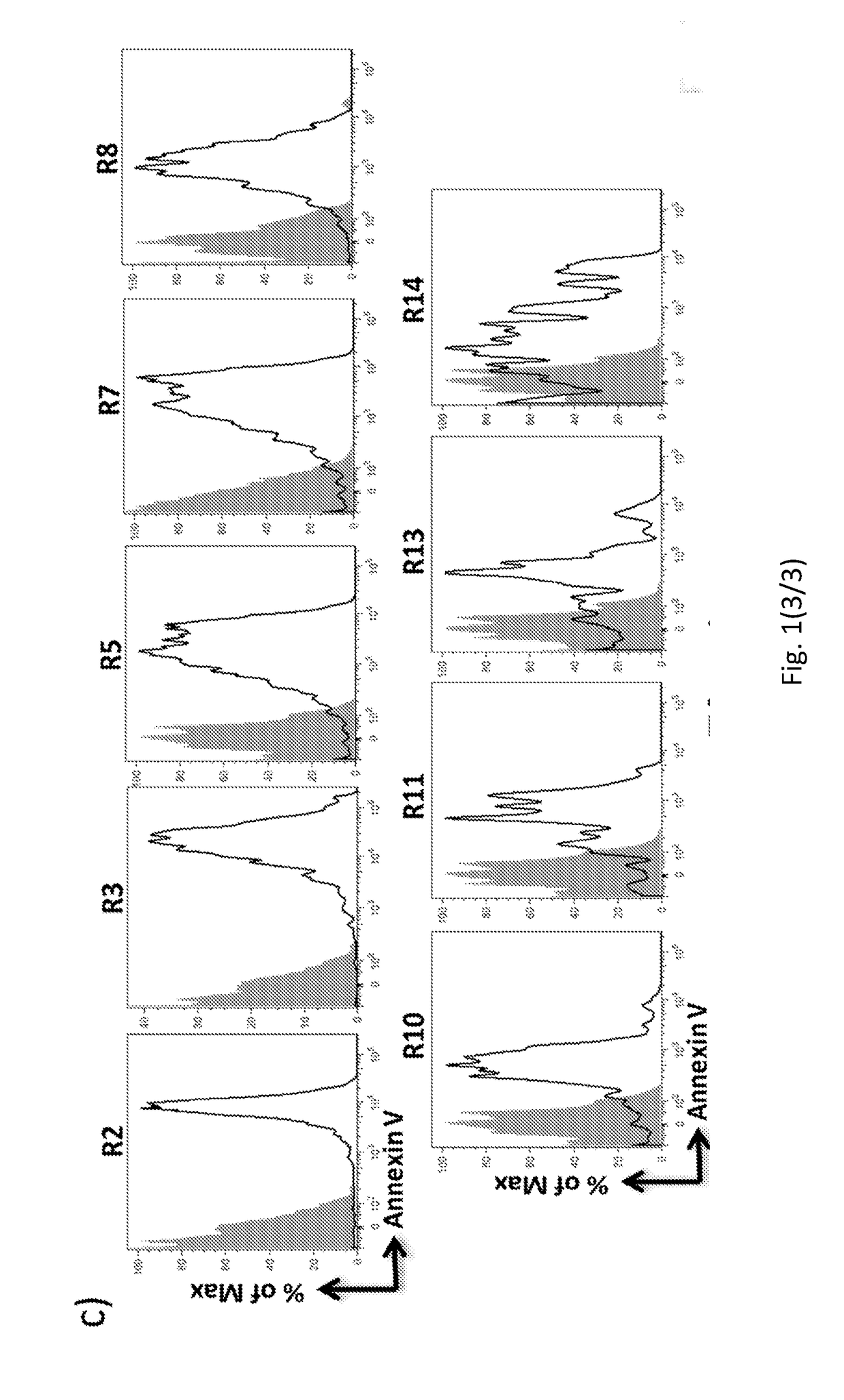Method for characterization of cell specific microvesicles
a cell specific and microvesicle technology, applied in the field of cell specific microvesicles characterization, can solve the problems of limiting the application of this technology, the lack of a selective characterization and quantification method of circulating cardiac-derived mv, and the leading cause of morbidity and mortality among adults
- Summary
- Abstract
- Description
- Claims
- Application Information
AI Technical Summary
Benefits of technology
Problems solved by technology
Method used
Image
Examples
example 1
[0183]Materials and Methods
[0184]Plasma Isolation and Storage
[0185]According to published recommendations, plasma sampling and storage techniques were standardized for overall patients and healthy subjects.
[0186]Informed consent was obtained from each patient and healthy subjects.
[0187]A 5 ml sample of peripheral blood was collected in EDTA-containing Vacutainer tubes. The vials were processed within 2 h of collection by centrifugation at 1200×g at room temperature in a bench top centrifuge for 20 minutes to eliminate all blood cells. To further reduce leukocyte and red cells contamination, the top third of the plasma was aspirated and placed in fresh tubes and frozen at −80° C.
[0188]MV Isolation from Plasma.
[0189]Human plasma was diluted with filtered PBS− / − (no calcium and magnesium) and centrifuged at 500 g×30 minutes at 4° C. The obtained Platelet Free Plasma (PFP) was centrifuged at 12000 g×45 minutes at 4° C. Finally, the supernatant was removed leaving 25 μl of a MV-enriched ...
example 2
[0237]MV Isolation and Storage.
[0238]According to published recommendations, plasma samples and storage techniques were standardized. A 5 ml sample of peripheral blood was collected in EDTA-containing Vacutainer tubes. The vials were processed within 2 h of collection by centrifugation at 1,200 g×20 min. at room temperature (RT) to eliminate all blood cells. To further reduce leukocyte and red cell contamination, the top third of the plasma was aspirated and placed in a fresh tube. According to the literature, isolated plasma was subsequently diluted with filtered PBS and centrifuged at 500 g×30 min. at 4° C. The obtained platelet-free plasma was centrifuged at 12,000 g×45 min. at 4° C. Finally, the supernatant was removed, leaving 25 μl of an MV-enriched suspension, which was diluted with 75 μl of filtered PBS (Caby M P, et al. Int Immunol. 2005 July; 17(7):879-87).
[0239]FACS Analysis.
[0240]To limit background noise from dust and crystals, a 0.22 μm filtered sheath fluid was used f...
PUM
 Login to View More
Login to View More Abstract
Description
Claims
Application Information
 Login to View More
Login to View More - R&D
- Intellectual Property
- Life Sciences
- Materials
- Tech Scout
- Unparalleled Data Quality
- Higher Quality Content
- 60% Fewer Hallucinations
Browse by: Latest US Patents, China's latest patents, Technical Efficacy Thesaurus, Application Domain, Technology Topic, Popular Technical Reports.
© 2025 PatSnap. All rights reserved.Legal|Privacy policy|Modern Slavery Act Transparency Statement|Sitemap|About US| Contact US: help@patsnap.com



